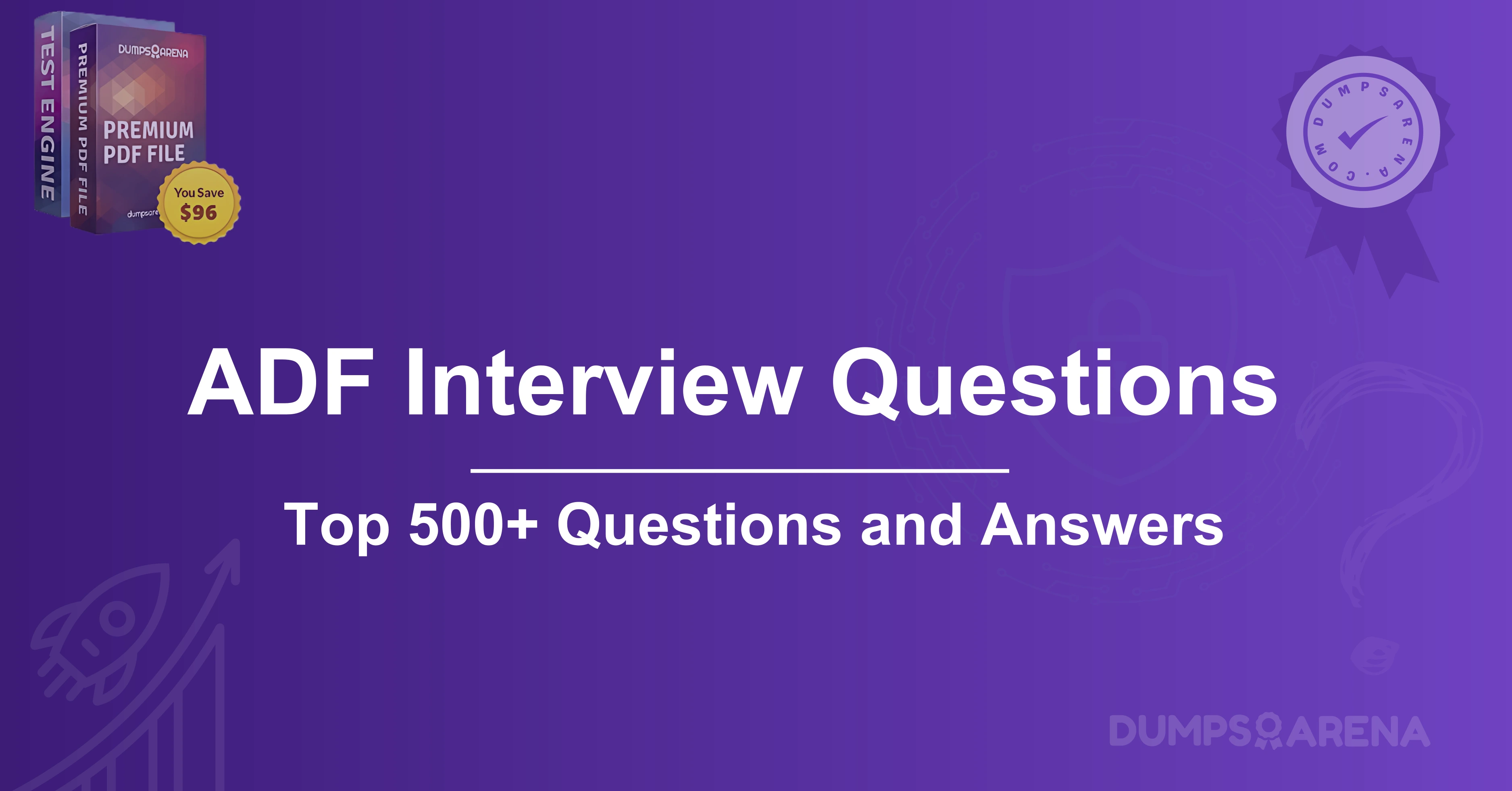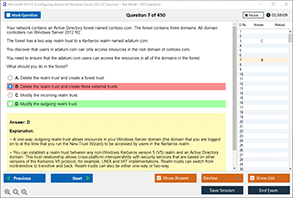Briefly Introduce ADF (Azure Data Factory) and Its Growing Demand in the Data Engineering and Cloud Industry.
Azure Data Factory (ADF) is a cloud-based data integration service that enables organizations to create, schedule, and manage data pipelines between on-premises and cloud data sources. It offers a wide range of connectors to various data sources, including relational databases, NoSQL databases, cloud storage, and on-premises systems.
ADF is gaining significant demand in the data engineering and cloud industry due to its numerous benefits. It provides a reliable and scalable platform for data integration, eliminating the need for manual data extraction and transformation.
Additionally, its intuitive user interface simplifies the process of creating and managing data pipelines, making it accessible to both technical and non-technical users. The growing adoption of cloud computing and the increasing demand for data-driven insights have contributed to the rising popularity of ADF, making it an essential tool for organizations looking to leverage their data effectively.
Highlight Why Preparing For an ADF Interview is Crucial in 2025.
Preparing for an ADF interview is crucial in 2025 as the demand for Azure Data Factory (ADF) professionals continues to rise. With the growing adoption of cloud-based data integration and analytics solutions, ADF has become a sought-after skill in the data engineering industry.
A well-prepared interviewee can demonstrate their technical proficiency, problem-solving abilities, and understanding of ADF's capabilities. Common ADF interview questions cover topics such as data pipelines, data transformations, scheduling, and monitoring. Candidates should be familiar with ADF's architecture, best practices, and common integration scenarios.
By thoroughly preparing for an ADF interview, candidates can increase their chances of success and secure a role in this high-growth field.
Resources To Ace Your ADF Interview (Dumpsarena)
Preparing for an ADF interview can be daunting, but with the right resources, you can increase your chances of success. Dumpsarena offers comprehensive Azure Data Factory interview questions and answers that cover a wide range of topics, including data integration, data transformation, and data warehousing. These resources provide valuable insights into the technical and behavioral questions you may encounter during your interview.
Dumpsarena's ADF interview questions are meticulously curated by industry experts and are updated regularly to reflect the latest trends and advancements in Azure Data Factory.
By utilizing these resources, you can gain a deeper understanding of the key concepts and technologies that are essential for success in an ADF role. Whether you are a seasoned professional or a recent graduate, Dumpsarena's Azure Data Factory interview preparation materials are an invaluable resource for acing your interview and securing your dream job.
Top ADF Interview Questions and Expert Answers
Azure Data Factory (ADF) Basics
1. What is Azure Data Factory primarily used for?
a) Real-time data processing
b) Data visualization
c) Data integration and ETL/ELT processes
d) Machine learning model training
2. Which of the following is NOT a component of Azure Data Factory?
a) Pipelines
b) Datasets
c) Linked Services
d) Data Lakes
3. What is the purpose of a Linked Service in ADF?
a) To define the structure of the data
b) To connect to external data sources
c) To schedule pipeline execution
d) To transform data
4. Which of the following is a type of trigger in ADF?
a) Schedule Trigger
b) Event Trigger
c) Tumbling Window Trigger
d) All of the above
5. What is the primary purpose of a Pipeline in ADF?
a) To store data
b) To group and execute activities
c) To connect to data sources
d) To visualize data
ADF Activities and Data Movement
6. Which activity is used to copy data from one location to another in ADF?
a) Lookup Activity
b) Copy Data Activity
c) Execute Pipeline Activity
d) Stored Procedure Activity
7. What is the purpose of the Lookup Activity in ADF?
a) To move data between sources
b) To retrieve metadata or data from a source
c) To transform data
d) To schedule pipelines
8. Which of the following is NOT a supported source or sink in ADF Copy Data Activity?
a) Azure Blob Storage
b) Amazon S3
c) Google BigQuery
d) MongoDB
9. What is the maximum data size that can be copied in a single Copy Data Activity?
a) 1 TB
b) 100 GB
c) 10 TB
d) Unlimited
10. Which activity is used to execute SQL queries in ADF?
a) Copy Data Activity
b) Lookup Activity
c) Stored Procedure Activity
d) Execute Pipeline Activity
ADF Data Transformation
11. Which service is used for serverless data transformation in ADF?
a) Azure Databricks
b) Azure Synapse Analytics
c) Azure HDInsight
d) All of the above
12. What is the purpose of the Mapping Data Flow in ADF?
a) To copy data between sources
b) To visually design data transformation logic
c) To schedule pipelines
d) To monitor pipeline execution
13. Which of the following is NOT a transformation in Mapping Data Flows?
a) Join
b) Aggregate
c) Filter
d) Copy
14. What is the default compute type for Mapping Data Flows?
a) Azure Databricks
b) Azure Synapse Analytics
c) General Purpose Cluster
d) Memory Optimized Cluster
15. Which of the following is true about Mapping Data Flows?
a) They require manual coding for transformations
b) They are executed on Spark clusters
c) They cannot be debugged
d) They do not support partitioning
ADF Triggers and Scheduling
16. Which trigger type is used to execute pipelines based on a time schedule?
a) Event Trigger
b) Schedule Trigger
c) Tumbling Window Trigger
d) Manual Trigger
17. What is the purpose of a Tumbling Window Trigger?
a) To trigger pipelines at random intervals
b) To trigger pipelines at fixed intervals without overlapping
c) To trigger pipelines based on external events
d) To trigger pipelines manually
18. Which of the following is NOT a parameter for a Schedule Trigger?
a) Start Time
b) End Time
c) Frequency
d) Data Dependency
19. How can you manually trigger a pipeline in ADF?
a) Using a Schedule Trigger
b) Using a Tumbling Window Trigger
c) Using the "Trigger Now" option
d) Using an Event Trigger
20. What is the maximum frequency for a Schedule Trigger?
a) Once per minute
b) Once per hour
c) Once per day
d) Once per week
ADF Monitoring and Troubleshooting
21. Which tool is used to monitor pipeline execution in ADF?
a) Azure Monitor
b) Azure Log Analytics
c) ADF Monitoring Hub
d) All of the above
22. What is the purpose of the "Retry" property in ADF activities?
a) To restart the pipeline
b) To rerun the activity in case of failure
c) To skip the activity
d) To log errors
23. Which of the following is NOT a status of a pipeline run?
a) In Progress
b) Succeeded
c) Failed
d) Paused
24. How can you debug a Mapping Data Flow?
a) Use the Debug mode in the Data Flow canvas
b) Use Azure Monitor
c) Use the Copy Data Activity
d) Use the Lookup Activity
25. Which of the following is a common cause of pipeline failure in ADF?
a) Incorrect Linked Service configuration
b) High data volume
c) Lack of monitoring
d) All of the above
ADF Integration and Advanced Concepts
26. Which of the following can be used to orchestrate ADF pipelines?
a) Azure Logic Apps
b) Azure Functions
c) Azure Event Grid
d) All of the above
27. What is the purpose of the "Execute Pipeline" activity?
a) To copy data
b) To call another pipeline from within a pipeline
c) To transform data
d) To monitor pipelines
28. Which of the following is true about ADF integration with Azure Synapse Analytics?
a) ADF cannot integrate with Synapse Analytics
b) ADF can use Synapse Analytics as a compute resource
c) ADF replaces Synapse Analytics
d) ADF and Synapse Analytics are the same
29. What is the purpose of the "Wait" activity in ADF?
a) To pause pipeline execution for a specified time
b) To wait for data to arrive
c) To wait for a trigger
d) To wait for a dependent pipeline
30. Which of the following is a best practice for optimizing ADF pipelines?
a) Use as many activities as possible in a single pipeline
b) Use parallel execution for independent activities
c) Avoid using Mapping Data Flows
d) Do not use triggers
These questions should help you prepare for an ADF interview by covering a wide range of topics. Let me know if you need further clarification or additional questions!
Get 500+ Questions And Answers: https://dumpsarena.com/microsoft-dumps/dp-900/




